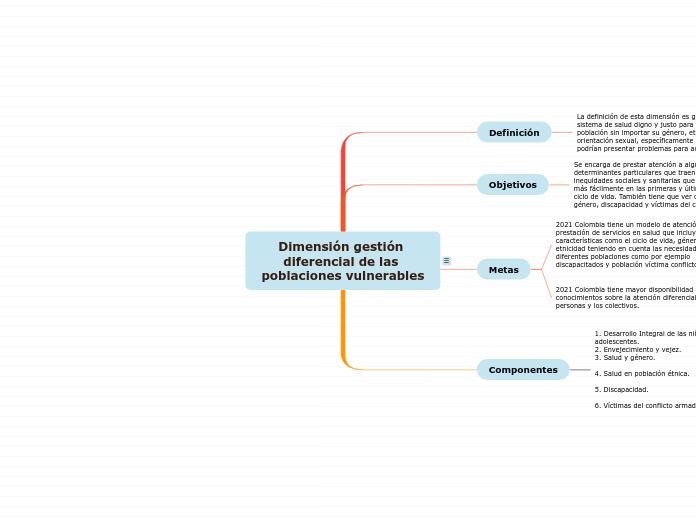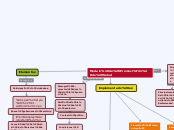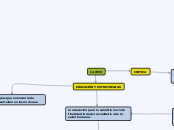Dimensión gestión diferencial de las poblaciones vulnerables
Referencia
Ministerio de Salud y Protección Social.(2012). Dimensión transversal gestión diferencial de poblaciones vulnerables. Recuperado de:
https://www.minsalud.gov.co/plandecenal/Documents/dimensiones/dimensiontransversal-gestiondiferencialpoblaciones-vulnerables.pdf
To name your story, you have to think about the overall message and what you want your audience to understand from the story. Also, make it relevant and easy to remember.
Componentes
1. Desarrollo Integral de las niñas, niños y adolescentes.
2. Envejecimiento y vejez.
3. Salud y género.
4. Salud en población étnica.
5. Discapacidad.
6. Víctimas del conflicto armado.
Metas
The ending of a story is essential. We all know that if the ending is weak, what happened before loses its importance. So make it unpredictable, but fair. A resolved ending answers all the questions and ties up any loose threads from the plot.
2021 Colombia tiene mayor disponibilidad de conocimientos sobre la atención diferencial sobre las personas y los colectivos.
This is the closure section of the story.
See examples of possible outcomes below:
- all problems have been solved
- it's clear how each one of your characters ends up
- your main character is transformed by the challenge
2021 Colombia afianza la participación social en salud por medio de redes de organizaciones sociales que repercuten de manera positiva en las políticas públicas que intervienen los determinantes sociales de la Salud.
Try answering these questions to come up with a closure:
- Have all the problems been solved?
- Is there a clear picture of what happens with each character in the story?
- Has the challenge transformed your main character?
- How do the characters feel in the end?
2021 Colombia tiene un modelo de atención y prestación de servicios en salud que incluye características como el ciclo de vida, género y la etnicidad teniendo en cuenta las necesidades de diferentes poblaciones como por ejemplo discapacitados y población víctima conflicto armado.
This is the moment when the main character surpasses the last obstacle and finally faces their greatest challenge.
The climax usually follows one of these patterns:
- realization
- resolution
- choice
Type in your answer.
2021 Colombia ha implementado modelos en el tema de la comunicación y educación en salud acerca de conductas saludables con enfoque diferencial
Objetivos
The middle of the story is where you add layers of complications that will lead to the end. Reveal more about the character's journey. Did their personality go through changes? How did they overcome the challenges? And as you build up the story’s central conflict, make it more personal to that character. Also, from the middle act, you have to lead into the final act.
Se encarga de prestar atención a algunos determinantes particulares que traen consigo inequidades sociales y sanitarias que se encuentran más fácilmente en las primeras y últimas etapas del ciclo de vida. También tiene que ver con salud y género, discapacidad y víctimas del conflicto.
Your character(s) need(s) motivation in order to solve the challenge(s).
Promover buenas prácticas de gestión y desarrollo de capacidades que contribuyan a la movilización social, la participación de la sociedad civil entre otros, controlando así los conflictos de interés.
Secondary characters also might have motivs beacuse of which they may cross path with main character or which might trigger them to help the main character.
Definición
In the beginning of the story (or the exposition), you will need to introduce the setting and characters. You might also want to introduce the main conflict. This part of the story is important because it gives the reader necessary background information and maybe even a first insight into a character’s personality.
La definición de esta dimensión es garantizar un sistema de salud digno y justo para todo tipo de población sin importar su género, etnia, raza u orientación sexual, específicamente en grupos que podrían presentar problemas para acceder a este.
The setting (time & place) of a story can change throughout the plot.










